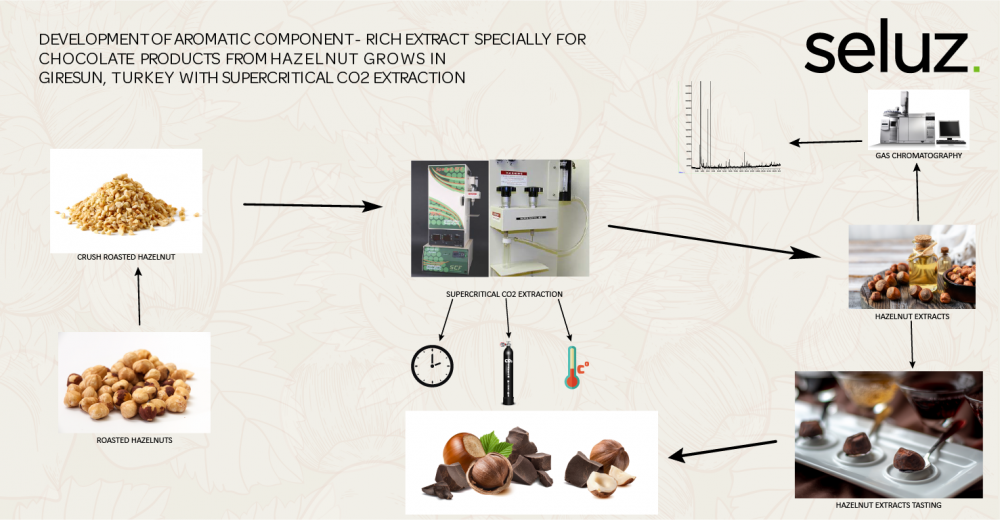JOURNAL 3085
Records of Agricultural and Food Chemistry
Year: 2024 Issue: 3 Special Issue: Abstracts 3rd. TCS, International Food Chemistry Congress February 29-March 03,2024 Antalya Türkiye
p.65 - 65
Viewed 899 times.
GRAPHICAL ABSTRACT

ABSTRACT
Türkiye is the largest producer and exporter country of various types of hazelnuts in the world, contributing to approximately 70% of the total world production. Among the 18 hazelnut varieties grown in Türkiye; these hazelnuts are classified as premium quality due to its high oil content, unique taste, and aroma [1] Different aroma extraction methods were used successfully in the seeds [2]. Taste and aroma of hazelnut extracts are caused by their taste-active components (free amino and phenolic acids, sugars, organic acids, and condensed tannins ) and aroma-active components (ketones, aldehydes, pyrazines, alcohols, aromatic hydrocarbons, furans, pyrroles, terpenes, and acids) [1]. Filbertone and pyrazines are components of extracts that causes the characteristic odor of roasted hazelnuts [3]. Hazelnut provides a distinctive and unique flavour as a food ingredient. In this study, it was aimed to examine the chemical content of extracts obtained by supercritical CO2 extraction that carried out under different conditions by using GC-MS and to compare these extracts with each other as sensory. Analytical and sensory evaluation of the obtained roasted hazelnut extracts was achieved by an evaluation team consisting of flavorists. When aromatic component profiles were analyzed by GC-MS and taste and odor profiles were compared in the supercritical CO2 extraction studies, the best results were achieved at temperature 40 oC, pressure 150 bar and extraction time 150 minutes.
KEYWORDS- Rosted Hazelnut
- supercritical CO2 extraction
- flavour
- GC-MS